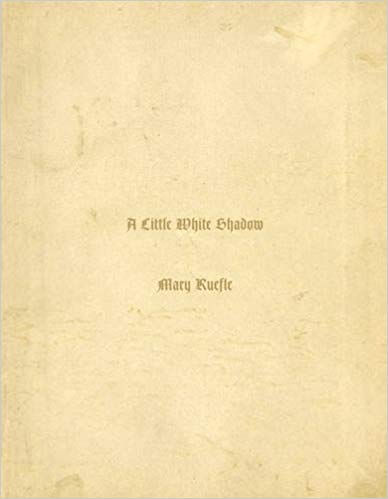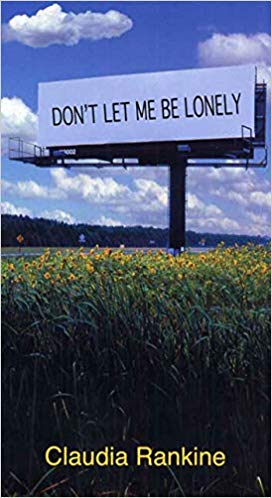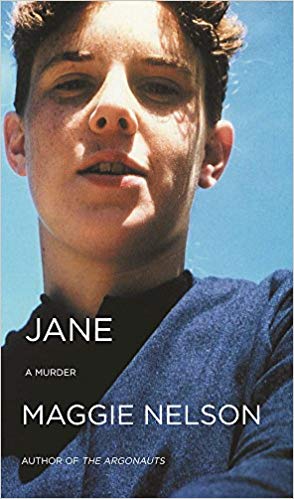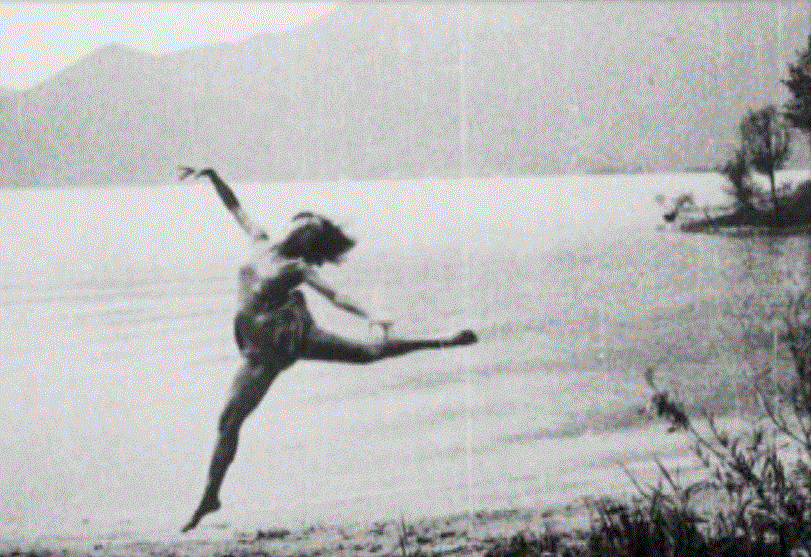Read More Women
5 Unclassifiable Books by Women, Recommended by Kathryn Scanlan
The author of "Aug 9—Fog" picks books that break boundaries and expectations

It’s hard to explain Kathryn Scanlan’s book Aug 9—Fog. It’s archival, reproducing text from a found diary. It’s transformative, rearranging lines from that diary like a collage. It’s… a book-length found poem? A remixed autobiography? Anyway, it’s cool. And Scanlan has suggested five other cool, poetic, transformative, or formally innovative books for our Read More Women project.
Read More Women is Electric Literature’s series, presented in collaboration with MCD Books, in which we feature prominent authors, of any gender, recommending their favorite books by women and non-binary writers. Twice a month, you’ll hear about the five non-male authors who most delight, inspire, and influence your favorite writers.
Mary Ruefle, A Little White Shadow
How I love this work, published by Wave Books in 2006. In its paperback form—small, slim, plain—the book is reminiscent of a religious pamphlet, which makes sense given that the original text (of the same name), made new here by Ruefle, was written by Emily Malbone Morgan, a Christian philanthropist. Morgan’s A Little White Shadow was published in 1889, and the proceeds were used to build a vacation home for the exhausted girls who worked in textile mills. Ruefle approached this text with white paint, redacting much and thereby revealing and creating a new poem. A critic in Found Poetry Review writes that in doing so, “Ruefle exposes Morgan’s voice not as author, but as figure to step out of time and address the modern,” which I think is an apt way to describe this work. The pages are archival photocopies of Ruefle’s original, preserving the texture and color of the antique, which contrast beautifully with Ruefle’s rough white. Though she is working with the text of another, the pleasure and surprise of Ruefle’s poetic genius nonetheless abounds: “very simply/It’s always noon with me/pale, and/deformed but very interesting.”
Claudia Rankine, Don’t Let Me Be Lonely
When I first read Don’t Let Me Be Lonely in a graduate class more than a decade ago, it forever changed my thoughts on form. Written in the years following 9/11 and published by Graywolf in 2004, it is a meditation on memory, loss, grief, anxiety, medication, the body, and the media, but that of course is a gross simplification of this profound masterwork. The book is sectioned into what might be called chapters by a reoccurring image, alone at the bottom of a page: a black-and-white picture of a television set, its screen full of static. Other images of television (and computer) screens appear throughout, as well as scans of prescription medication labels, a schematic for the torso and apparatus of Mr. Tools—for a while the only person in the world walking around with an artificial heart—and a diagram of the human digestive system where the intestines have been replaced by the dark mass of the United States. Rankine’s prose moves like a mind awake in the night, unable to shut off, unable to discontinue its incessant processing of images, of stories, of worry. The control with which she does this, and the depth of meaning achieved, are things to be studied, to be marveled at.
Lydia Davis, The Cows
Published as a chapbook by Sarabande in 2011, The Cows is a slim, 37-page volume wherein Davis observes the postures and movements of the cows who graze in a field opposite her home. The text—accompanied by photographs taken by Davis, Theo Cote, and Stephen Davis—is comprised of discrete, descriptive paragraphs told in the present tense. I get the sense Davis might’ve written these whenever she came into her kitchen for a glass of water or a snack—they have the daily, habitual feel of a weather journal, and in fact weather is sometimes described along with the cows: They seem expectant this morning, but it is a combination of two things: the strange yellow light before a storm and their alert expressions as they listen to a loud woodpecker. I am delighted by the endurance of this seemingly banal endeavor, by Davis’s tender humor, by her perfectly turned renderings of these animals whose positions mark her days like the hands of a clock. She describes the cows as though they are works of art—which, of course, they are.
Harryette Mullen, Sleeping with the Dictionary
The glee I experience when reading this book is something rare, and I can only imagine Mullen to have had a similarly joyful experience writing it. The poems, arranged alphabetically, are shaped by Mullen’s engagement with Roget’s Thesaurus and The American Heritage Dictionary, but also by the strategies of the Oulipo and word games like puns, anagrams, and homophones. I take particular delight in her liberal use of periphrasis (the Wikipedia example of this is the elongated yellow fruit in place of banana), which results in sentences like this one, from “European Folk Tale Variant” (her rewrite of Goldilocks and the Three Bears): The way the story goes, a trespassing towheaded pre-teen barged into the rustic country cottage of a nuclear family of anthropomorphic bruins. Yet her playfulness is ever tempered by—indeed seems to spring from—a formal rigor and investigatory purpose. I get the sense she is always listening to language and how we use it—always picking up scraps of it to contort and collage, always alive to both the shortcomings and the endless possibilities of speech.
Maggie Nelson, Jane: A Murder
I’d read—loved—other books by Maggie Nelson for years, but for some reason, I didn’t read Jane: A Murder until recently. I read it in one sitting and felt it spoke to so many things I’d been trying to figure out over the years about form, about literary collage, about possibility and meaning. Originally published in 2005 and recently reissued by Soft Skull Press, the book is a portrait of Nelson’s Aunt Jane—her life and death—built from myriad sources: Jane’s diaries and letters, accounts from family members, newspaper articles, and a pulpy book that sensationalized the murder of Jane and several other young woman in Michigan in the late 1960s. Nelson manipulates her material in a way that is cohered by her poetic vision yet also remains polyvocal. It is a restless, resistant book that refuses the treatment so often given to acts of violence—a type of lurid gawking—and instead creates a complex, unsettling, and ultimately unresolved (how could it be otherwise?) depiction of a life lived, ended, mourned, and imagined.













